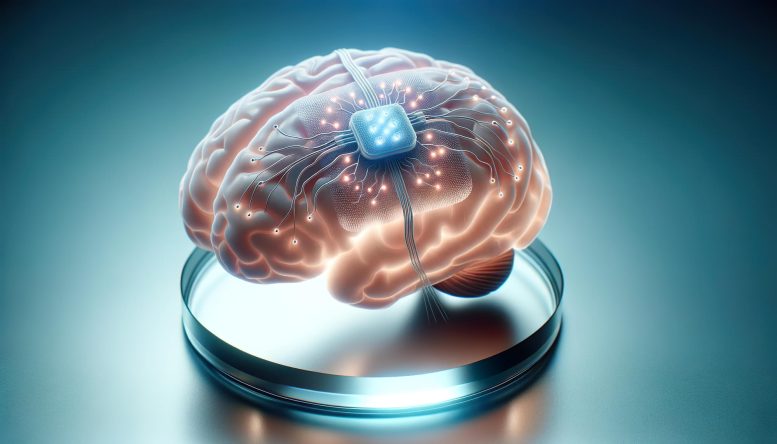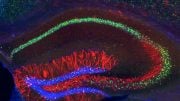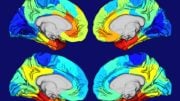
A patient at Oregon Health & Science University underwent a groundbreaking procedure where a single brain implant successfully controlled both her epilepsy-induced seizures and obsessive-compulsive disorder. Following the treatment, Amber Pearson experienced profound relief from her OCD symptoms, transforming her quality of life.
For the first time, a single electrode targets two brain regions for dual benefit; patient reports a life-changing outcome from 2019 procedure.
A patient at Oregon Health & Science University is the first in the world to benefit from a single stimulator implanted in the brain to effectively control two life-altering conditions: seizures caused by epilepsy and compulsive behavior caused by obsessive-compulsive disorder, or OCD.
Amber Pearson, 34, of Albany, said her seizures are under better control, but the relief from her psychiatric condition is profound.
“OCD is worse than having the seizures,” she said. “Epilepsy brings limitations to my life, but OCD controlled it.”
In the case study, published in the journal Neuron, co-authors from institutions across the country describe the interactive programming of the responsive neurostimulation system, or RNS, that now functions seamlessly to control the compulsions that once ruled her life.
Patient’s Experience Before Treatment
“Before I started treatment with my RNS, I would wash my hands until they would bleed,” Pearson said. “My hands would be so dry that bending my fingers would crack the skin of my knuckles.”
Checking and rechecking windows and closets and making sure the stove was off before bed could take 45 minutes. She couldn’t sit next to people while eating out for fear their food would contaminate hers, even during family meals over holidays. She took a shower every time she changed the cat box.
That all began to change following a procedure at OHSU on March 5, 2019.
Medical Professionals Behind the Breakthrough
Ahmed Raslan, M.D., professor of neurological surgery in the OHSU School of Medicine, implanted the device for the primary purpose of controlling Pearson’s seizures.
At the patient’s request, he also made sure the 32-millimeter-long electrode spanned the portion of her brain known as the nucleus accumbens — the area of the brain associated with motivation and action, including compulsive urges.
“I could target both portions of the brain and get a second benefit,” Raslan said.
Raslan collaborated with Casey Halpern, M.D., a neurosurgeon now at Penn Medicine who conducted the research portion of the procedure to treat Pearson’s OCD through Stanford University.
Marissa Kellogg, M.D., an assistant professor of neurology in the OHSU School of Medicine, first met Pearson as a patient in 2016, and was struck by her positive attitude despite severe health difficulties.
“The first thing she told me when I met her was, ‘I want brain surgery for my epilepsy,’” Kellogg recounted.
Pearson did, in fact, undergo the standard surgery for treating drug-resistant seizures through a procedure at OHSU in 2018, involving the removal of a small portion of the brain where seizures emanate. The procedure stopped some but not all of her seizures, so Pearson decided to move forward with implanting the RNS — a relatively new type of implant that actively monitors brain activity and delivers a small pulse to quell seizures before they begin.
In the course of conducting her own research, she learned that some people had reported these implants alleviated psychiatric conditions, including OCD.
Kellogg said Pearson was eager for the chance to try it.
“It was an incredible opportunity,” Kellogg said. “Amber is really a future-thinking patient, and she really drove the boat here.”
Kellogg, a neurologist with an interest in mental health conditions sometimes associated with epilepsy, had done her fellowship training at Stanford, and knew the team there had a strong psychiatry program with experience programing devices for off-label research purposes, under the oversight of Stanford’s institutional review board.
Life-Changing Outcomes
Pearson began noticing relief from her OCD within months of the brain implant. Four years later, the outcome has changed her life.
“Now I rarely worry about what’s going on at my house while I’m away. I’m noticing fewer obsessions and compulsions all the time,” she said. “I’ve been able to form healthier relationships with the people in my life.”
Reference: “Responsive deep brain stimulation guided by ventral striatal electrophysiology of obsession durably ameliorates compulsion” by Young-Hoon Nho, Camarin E. Rolle, Uros Topalovic, Rajat S. Shivacharan, Tricia N. Cunningham, Sonja Hiller, Daniel Batista, Austin Feng, Flint M. Espil, Ian H. Kratter, Mahendra T. Bhati, Marissa Kellogg, Ahmed M. Raslan, Nolan R. Williams, John Garnett, Bijan Pesaran, Desmond J. Oathes, Nanthia Suthana, Daniel A.N. Barbosa and Casey H. Halpern, 20 October 2023, Neuron.
DOI: 10.1016/j.neuron.2023.09.034









Be the first to comment on "“Life-Changing” – New Brain Implant Successfully Controls Both Seizures and OCD"